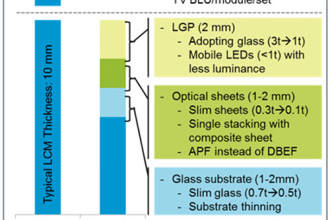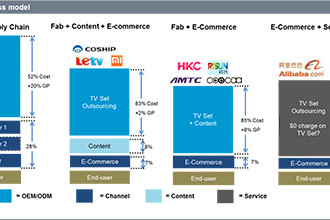DisplaySearch Revises Commercial LCD Sales Forecast Downward – But Could Consumer TV Use in Pro Applications Actually Be the Culprit?
 The global market for public displays remains strong, but in recent quarters, flat panel display manufacturers have emphasized revenue and profit over volume, thus lowering the overall unit shipment outlook for this category. As production of plasma displays continues to wind down, LCD-based commercial displays have yet to fully fill the void. With reduced production of plasma, the public display market fell 13 percent Y/Y. However, LCD public display shipments were up 23 percent Y/Y according to the recently released NPD DisplaySearch Quarterly FPD Public Display Shipment and Forecast Report.
The global market for public displays remains strong, but in recent quarters, flat panel display manufacturers have emphasized revenue and profit over volume, thus lowering the overall unit shipment outlook for this category. As production of plasma displays continues to wind down, LCD-based commercial displays have yet to fully fill the void. With reduced production of plasma, the public display market fell 13 percent Y/Y. However, LCD public display shipments were up 23 percent Y/Y according to the recently released NPD DisplaySearch Quarterly FPD Public Display Shipment and Forecast Report.
Forecasts still show strong growth, with the market set to push near 12 million units sold in 2018, an increase from just under 3 million units in 2011. Growth will be driven by new applications for public displays such as digital signage, interactive white boards, video walls, electronic menu boards, as well as the global trend toward urbanization in developing countries seen most visibly in China.
The advantage that plasma once had over LCD — larger displays for less money — has been disappearing over the years. Today, vendors such as Sharp are able to produce 60” and larger LCDs at less cost. Plasma had been able to capture some of the lower-end demand for public displays with that demand also being fulfilled by lower-priced consumer-TV displays. Leading vendors of commercial public displays, such as Samsung and NEC, are now focusing on 40” and larger sizes, conceding that the demand for medium-sized (26” to 39”) digital signage can be fulfilled by TV-grade products
In recent years, LCD manufacturers have been better able to differentiate their larger size displays (40” and larger) from similarly-sized consumer TV products with technologies such as thinner bezels, which allow for better video wall installations. Backlight technologies, such as LED, also offer unique solutions, allowing for not only thin displays, but also for higher brightness, which is needed by many commercial applications to perform in various ambient light conditions.
“This focus on higher-margin, larger-size displays is welcoming news—not just for display brands but for their global integrators alike. With a focus on technologies that have relevance to specific end-market needs, other players in the digital signage ecosystem also benefit by avoiding price comparisons against commoditized TVs,” noted Chris Connery, NPD DisplaySearch vice president of PC and large format commercial displays.
While the use of TVs in commercial environments is not always apparent, NPD DisplaySearch’s sell-through research with top commercial distributors and resellers indicates vendors that offer hybrid products that are a mix of commercial displays and consumer TVs. Detailed US commercial sell-through data shows that hybrid displays grew 85 percent Y/Y in Q1’12, outpacing pure commercial displays at only 5 percent Y/Y.
Connery added, “While the total market size for public displays is not shrinking, more displays now fall into different categories, which can be documented in new ways, such as when consumer TVs are used for commercial applications.”





